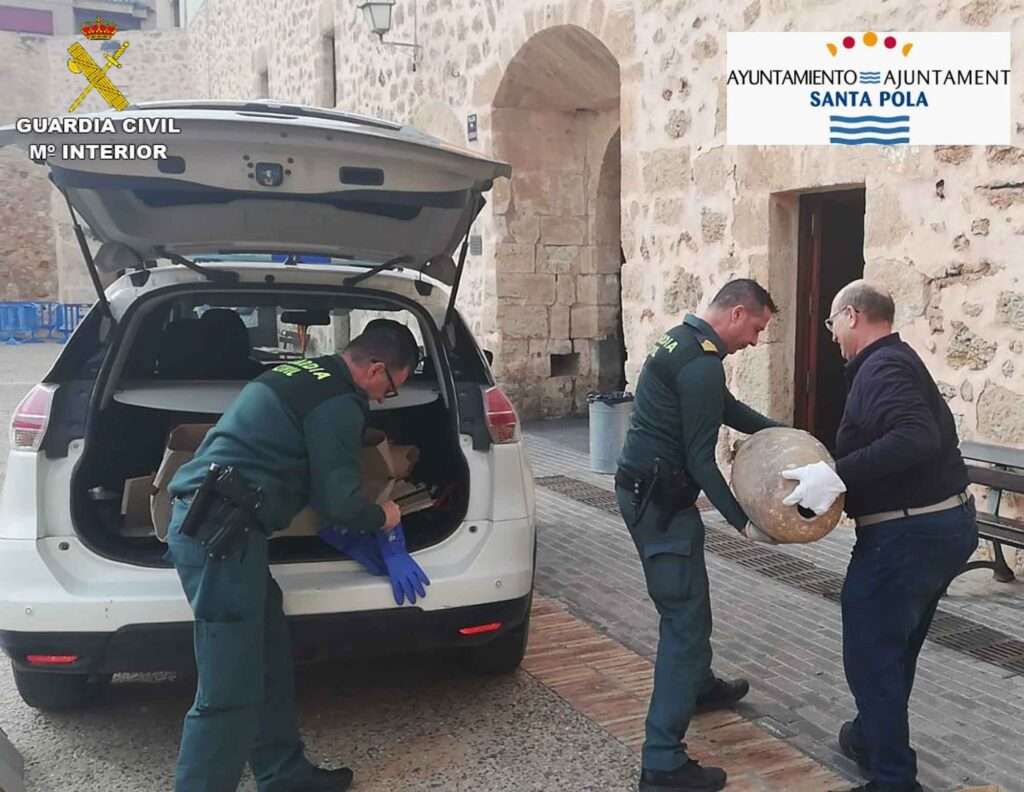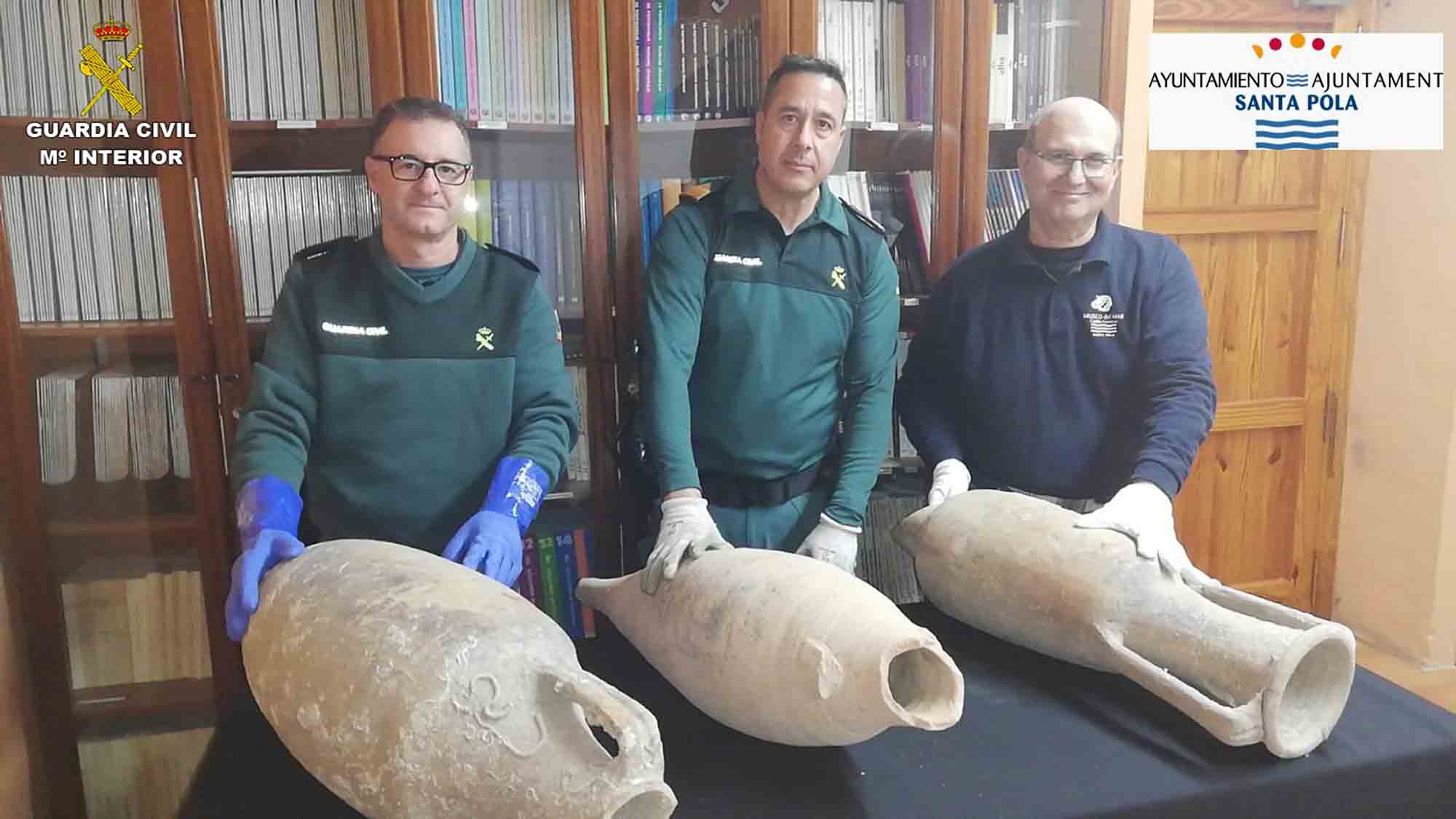A woman from Spain was shocked when she found three ancient Roman amphoras in the cellar of her home.
The homeowner from the coastal area of Costa Blanca, the city of Elche, Spain, was reportedly cleaning her house that she wanted to put for sale on Monday, 5th December 2022.
But when the woman, who has not been named, headed to clean her cellar she was astonished to discover three massive ceramic items dating back to the 1st century AD.
Believing they might be valuable, she immediately contacted the city’s Civil Guard who came to her home and collected the amphoras.

They then handed the artefacts over to specialists from the Sea Museum in Santa Pola, in the city of Valencia, who identified them as Roman ceramic amphoras dating back to nearly 2,000 years.
They confirmed that the artefacts originated from the area around the Baetic System, which is one of Spain’s main mountain ranges.
Spain’s Ministry of Interior revealed in a statement obtained by Newsflash on Tuesday (10th January): “Most of the amphoras found in this area were used to transport olive oil from the Baetic area of the peninsula, which was then shipped on the Portus Ilicitanus for transfer to Rome.”
Portus Ilicitanus was reportedly the main port that was used by the Roman colony of Ilici, present-day Elche.
The statement continued: “Others were also used to transport wine and fish sauces (garum) highly appreciated by the Romans.
“Due to the morphology of these three pieces, they could have been used to store and transport some of these products.

“It is possible that they come from one of the wrecks present on our coast.”
Meanwhile, the homeowner had no idea that the amphoras were there and speculated they might have been acquired by a deceased relative.
According to the law, illegal possession of archaeological artefacts could lead to fines of between EUR 60,000 (GBP 53,200) and EUR 150,000 (GBP 133,000).
The authorities said that the three items will be cleaned and restored before they are transferred to the Santa Pola museum for permanent display.
To find out more about the author, editor or agency that supplied this story – please click below.
Story By: Georgina Jadikovska, Sub-Editor: Joseph Golder, Agency: Newsflash
The Ananova page is created by and dedicated to professional, independent freelance journalists. It is a place for us to showcase our work. When our news is sold to our media partners, we will include the link here.




